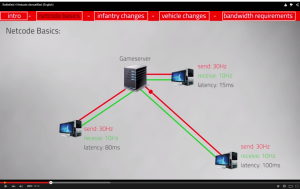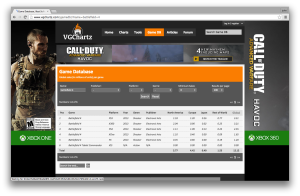And now PART II of
“THE PANOPTICON IN MY BEDROOM“!!!!!
I will first address the technological-Panopticon that supports and implements the online gaming experience.

The “technological” functions necessary to support a Massive Multiplayer Online video game (MMO) like Battlefield 4 can be broken down into two basic components or nodes: the client (your console or PC), and the server (the computer or computers that manage and maintain the game and your role as an active player). This is called the “client-server” architecture (see Figure 25, 27).
The logical centralization of the server with the clients at its periphery suggests its panoptic functionality as both surveillant and authority. Indeed, as a vigilant monitor, the server has no rival. Through a method of rapid[2] and routine electronic heartbeats the server maintains its electrical watch without interruption. In doing so it is able to quickly respond to the client’s requests for data or instructions.
However, this client-server surveillance has another mode, which put simply, is to ensure the client doesn’t do anything it shouldn’t, like send the server too many requests and force it to shutdown (what is known as a ‘Denial of Service’ attack). The server’s panoptic functionality is therefore key to the efficient interaction with the client, and in its ability to quickly react in the event that the client misbehaves. Thus, the server becomes, in effect, the “central inspector” of a digital-Panopticon.

Applied in the context of Battlefield 4, there are no doubt dozens of servers that function, collaboratively, as a “central inspection” multiplicity (see Figure 29). These work to maintain a cost-effective environment in which tens of thousands of players are monitored and managed simultaneously so that the overall experience encourages the player to keep playing, the worker to keep working.
In this way, the technological architecture mimics and executes the software algorithms of panoptic discipline instituted by the game’s designers, that likewise, fulfill Bentham’s intent but, paradoxically, exemplify it by reducing its various sub-schemas: prison – pauper – “chrestomathic” into a compact disciplinary paradigm whose efficiency is a significant contributing factor to the games success and, most importantly, its potential financial profit (see Figure 28).


Like the pauper-Panopticon, participation in the video game version is voluntary; in fact, people pay to get in (the first economic benefit derived from the panoptic disciplines). Playing the game requires the player to learn the “trade” as it were, which is conducted in the presence of more knowledgeable and experienced players. All are subject to the panoptic discipline of the server administrators.